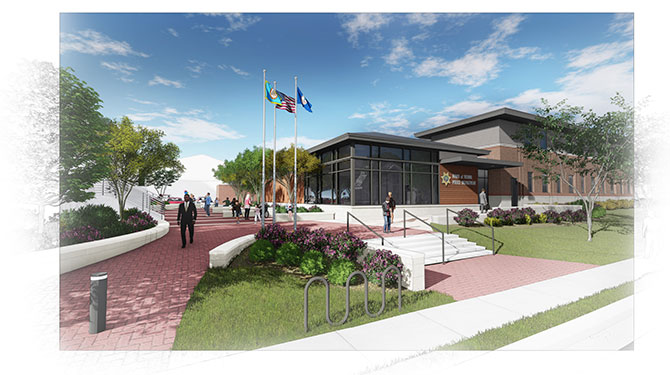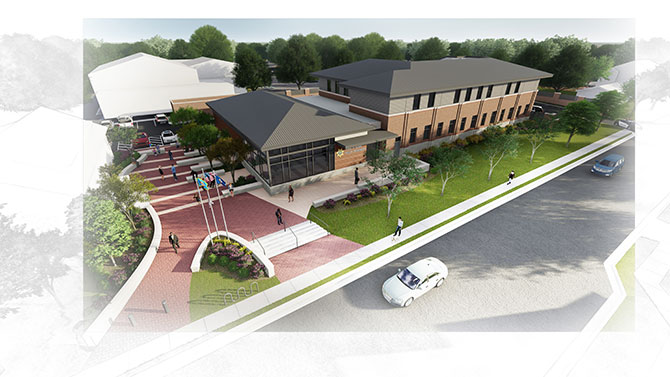The police force is an important institution in every municipality, and its success is grounded in the ability to foster strong relationships within the community it serves. A well-designed police facility creates an opportunity for departments to build
upon already established relationships with the public, enhancing the ability to make meaningful connections.
The most successful police facilities have unique features, such as community rooms, that are inviting to the public and create opportunities for non-law enforcement related interactions within the space. These facilities also provide a safe and secure
environment for officers, creating a refuge from daily job-related stresses by using design strategies that take a holistic approach to space creation. These can include approaches such as increasing daylight and facilitating views of natural
landscaping.
Building Success Through Community Engagement
One example of a law enforcement facility that has a strong civic presence is the Vienna Police Station located in Vienna, Virginia. In Vienna we are working collaboratively with the police department and community members to create a space that is outward
facing. As a result of this process we are able to create several concept layouts with the following objectives:
- Meet the needs of the department for current use and anticipated growth
- Develop a design with building aesthetics that align with the surrounding neighborhood
- Create a civic space between the Bowman house and the police station
The community engagement process involved presenting options to the town council for their feedback and direction, collaboration with town staff, as well as working closely with the Board of Architectural Review to make sure we are in line with community
guidelines.

This rendering shows a plaza perspective from Locust Street of the Vienna Police Station.
The Elements of Facility Success
Our building design for the Vienna Police Station incorporates several features to help achieve the stated objectives. A primary focus of the project is on safety and security, using strategies related to Crime Prevention Through Environmental Design (CPTED), the design team is using landscape elements
instead of bollards, where applicable, in order to protect the building. Additionally, our design incorporates secure parking for police and staff vehicles as well as separate public parking for the community. We also include site lighting that provides
ample sightlines throughout the grounds without spilling onto adjacent properties.
Accessibility and approachability are two other important factors taken into consideration. The design incorporates a plaza to activate the space between the historic Bowman House and the station. This is achieved by creating undulating planters that
are periodically interrupted by landscape seating. The police department is already working with the Department of Parks and Recreation to create programming and activities for the plaza.
Our choice of building materials also factored into providing a warm and welcoming facility. For example, we used wood paneling and a warm tone of brick to complement residential uses in the neighborhood. Similarly, the community room and main entry to
the facility use glass as a way to open up the facility and make it more inviting.
Sustainability also played a large role in our design concept. The facility is targeting LEED® Silver certification through use of sustainable materials, solar readiness, and focus on energy efficiency in all facets of the design.

This rendering of the Vienna Police Station shows a northwest aerial view from Locust Street.